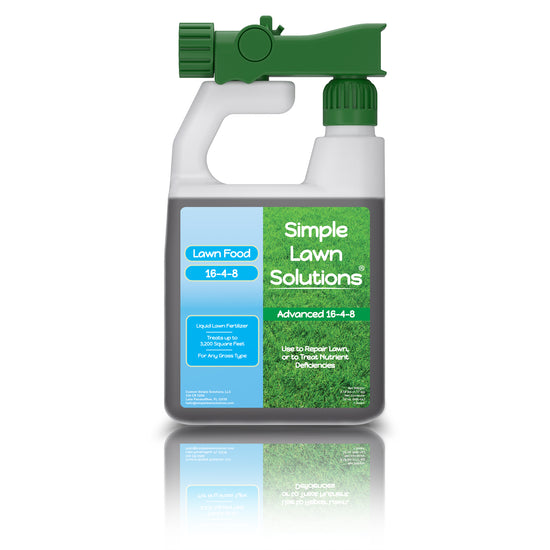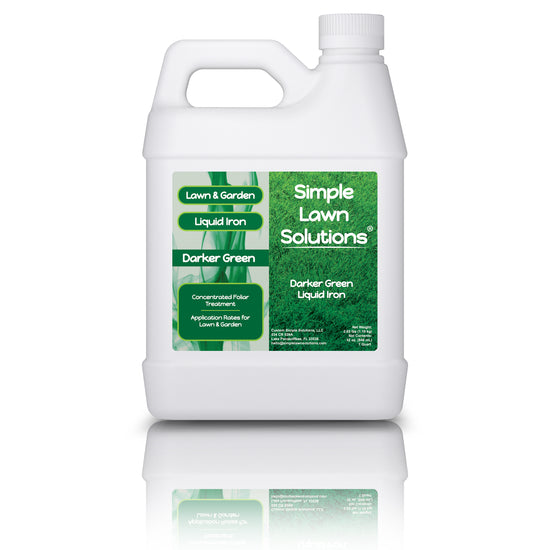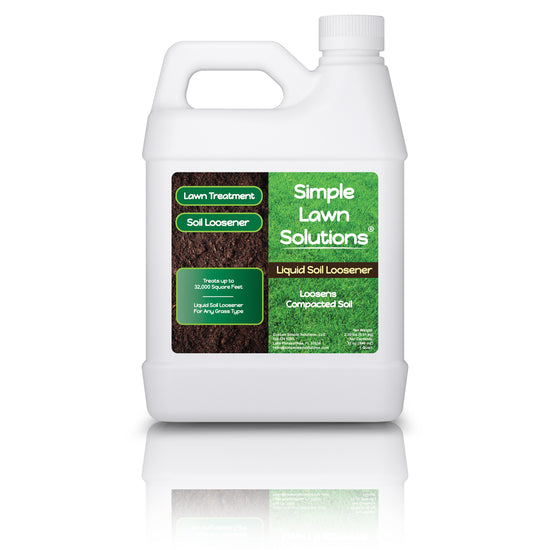Every homeowner wants to be the one in the neighborhood with the luscious green lawn that everyone envies. To have that lawn takes planning, maintenance, and the right lawn solutions.
 The first step in good lawn care is balanced soil. Since the grass receives its food from the nutrients found within the soil, your soil's quality is an important part of your lawn’s health. One of the most significant factors affecting the nutrients in your soil is the lawn pH. pH stands for “potential of Hydrogen.” It is a measure of hydrogen ions in your soil.
The first step in good lawn care is balanced soil. Since the grass receives its food from the nutrients found within the soil, your soil's quality is an important part of your lawn’s health. One of the most significant factors affecting the nutrients in your soil is the lawn pH. pH stands for “potential of Hydrogen.” It is a measure of hydrogen ions in your soil.
You may be familiar with pH levels from high school chemistry class or perhaps if you own a pool, but chances are pH is not something you think about much (if ever). However, it is an essential factor in determining the health of your lawn and choosing the right lawn solutions for optimal growth, strength, and color. Knowing the lawn pH level can make a difference in having a healthy lawn or not.
How is Lawn pH Measured?
The correct pH level in your lawn is important for your soil to provide the nutrients grass needs to grow and thrive. Lawns with a low or acidic pH may be more susceptible to disease, pests, and weeds. If you want to have a beautiful, green lawn, you need to test your lawn pH levels and adjust accordingly.
pH levels are measured on a scale of 0 to 14. When you measure your lawn pH, a neutral measurement range between 6 and 7 is ideal. Measurements that fall less than neutral indicate an acidic level, while measurements greater than neutral indicate an alkaline level.

If your lawn’s soil level is not neutral—either it’s too acidic or too alkaline —it indicates that your lawn may not be able to provide the nutrients it needs to be healthy. To find out where your lawn’s pH level falls, you will need to conduct a soil test. A soil test is a valuable tool to ensure the success of your lawn. Soil testing can be done at any time of year. However, if you have treated your lawn with any lawn solutions such as fertilizer, lime, or organic matter, the test may give misleading results.
Why Lawn pH Matters for Care
Lawn pH affects your lawn's overall health. Your lawn needs balanced soil to be healthy, and carry out plant functions. pH is essential for plants to thrive as it determines the availability of your soil's nutrients and its ability to thrive. The pH level of your lawn’s soil determines if it is acidic, alkaline, or neutral. By knowing where your lawn pH level stands, you will be able to choose the right lawn solutions to care for your lawn.
Acidic Soil
- Acidic soils (those with low pH values of 0-6) will have high amounts of H+ (and aluminum, in very acidic soils).
- Deficient in calcium and magnesium
- Contains excessive amounts of carbon dioxide, nitric acid, and sulfuric acid
- Common in moisture-rich climates
Alkaline Soil
- 8-14 on the pH scale

- Contains excessive sodium
- Has trouble absorbing nutrients
- Common in drier climates with little rainfall
-
Reduced availability of nutrients, such as iron manganese, and zinc.
Neutral Soil
- Seven on the pH scale
- Ideal for a well-balanced lawn
What Causes Acidity and Affects Lawn pH?
When soil acidity is not controlled correctly, the effectiveness of fertilizer is reduced. There are environmental issues that can increase acidity, such as:
- Rainfall
- Pollution
The overuse of fertilizers or the wrong ones can also cause your lawn to become too acidic, usually because of too much nitrogen. Overwatering or excessive rain washes away essential nutrients, which also lowers lawn pH.
How to Adjust Your Lawn’s pH Level
 Depending on your soil test results, you will either need to bring your lawn’s pH value down or raise it.
Depending on your soil test results, you will either need to bring your lawn’s pH value down or raise it.
Two materials commonly used for lowering the pH levels of your lawn are aluminum sulfate and sulfur. Applying aluminum is an instant change to pH levels as it produces acidity upon dissolving into the soil. Sulfur is slower-acting and can take several months to break down.
Liming is commonly conducted on acidic soils to attempt to raise the pH.
To see the best results when applying lawn solutions, make sure to:
- Read the lawn solution product label and follow the instructions.
- Apply the lawn solution product, wait at least three months, retest the soil, and reapply if needed.
- Be patient as it may take months or years to get your lawn looking healthy.
- Apply pH correcting products in the fall or winter to give them ample time to absorb ahead of the spring season.
Ways to Monitor Your Lawn pH
Throughout the year, if your lawn isn’t looking its best, conduct another pH test to be sure to give your soil the lawn solutions it needs to provide you with a beautiful lush, green lawn.

Lawn care is a lot of work. It is important to remember to add the recommended amount of any lawn solution product per your soil test results. Adding too much of a product may shift the pH level too far and cause further problems. Every few years, the lime and sulfur products are processed out of your soil, so retesting your soil is suggested to stay on top of any issues with pH levels.
If you want to learn more about soil’s nutrients and their importance in your lawn’s health, we have you covered with lawn solutions, tips, and tricks.










2 comments
Hi John, Fungus is best controlled preventatively prior to disease pressure ramping up. For the dead grass, wait until the fall, clean the areas up, and reseed. Make sure that the area has plenty of air flow, low thatch, and enough sunlight. Do not overwater or over-fertilize during the summer months. If you need any additional assistance, please send us an email at hello@simplelawnsolutions.com
it appears i have a fungus in my grass. i have applied a scotts fungus product. what is my best remedy? the grass is dead in some spots.no evidence of grubs. have changed my watering to early morn only/